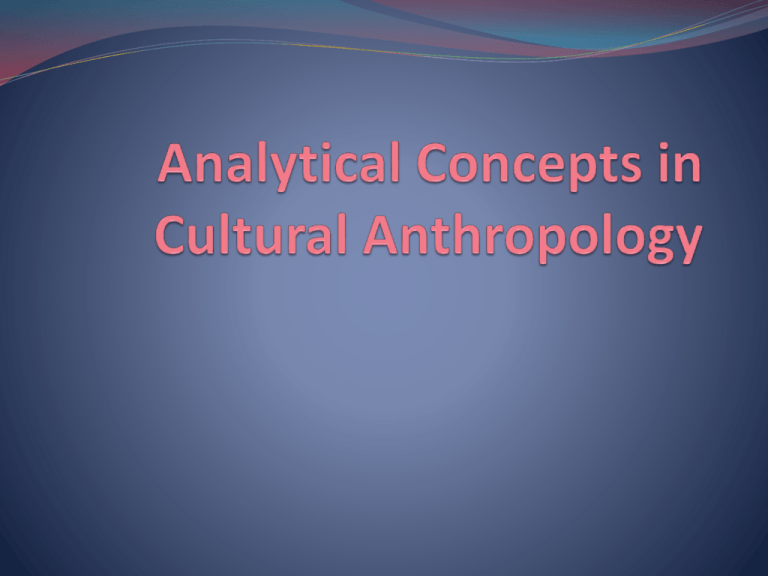Analytical Concepts in Cultural Anthropology
advertisement

Culture: A Definition Edward Tylor’s 1871 definition of culture: Culture or Civilization, taken in its wide ethnographic sense, is that complex whole which includes knowledge, belief, art, morals, law, custom, and any other capabilities and habits acquired by man as a member of society. Commonly accepted modern definition: Learned, shared behavior. Other takes: Lewis Binford (Leslie White): “Man’s extrasomatic means of adaptation.” 1968 Clifford Geertz: "... an historically transmitted pattern of meanings embodied in symbols, a system of inherited conceptions expressed in symbolic forms by means of which men communicate, perpetuate, and develop their knowledge about and attitudes toward life“ 1973 The Norm concept of behavior Derived from “normal.” A statistical concept. Corresponds to “real culture.” Folkways and mores. The value concept Commonly held standards of behavior. Often cannot be explicitly articulated by actors except when passing judgment on others. Therefore it is an internal (mental or cognitive) standard. Corresponds to “ideal culture.” Often confused semantically with the belief concept. Example: In 2004, a law was implemented banning headscarves from French public schools. The “law of secularity and conspicuous religious symbols” Points of justification: Headscarves violated the legally enshrined French values of: Laïcité “secularity” Francité “Frenchness” Egalité “Equality” One should be able to express a value with a minimum of terms. Beliefs: colonics Some Categories of Beliefs Pollution beliefs. Numerology. Religious Cosmology. Cosmography. Conspiracy theories (911, Kennedy assassination, Illuminati, Freemasons, etc.). Animism and animatism. Examples of beliefs from the media: It is possible to catch an arrow in f light. It is possible to duck a shoulder-launched missile or rocket-propelled grenade. Serial killers are always White (and intelligent). Divorces are most often initiated by men for the purpose of dumping their old wife for a young hottie. Trafficking in women for sex is rampant in the US. Three Levels of Cultural Analysis What People Think They Do What People Say They Do What People Actually Do







